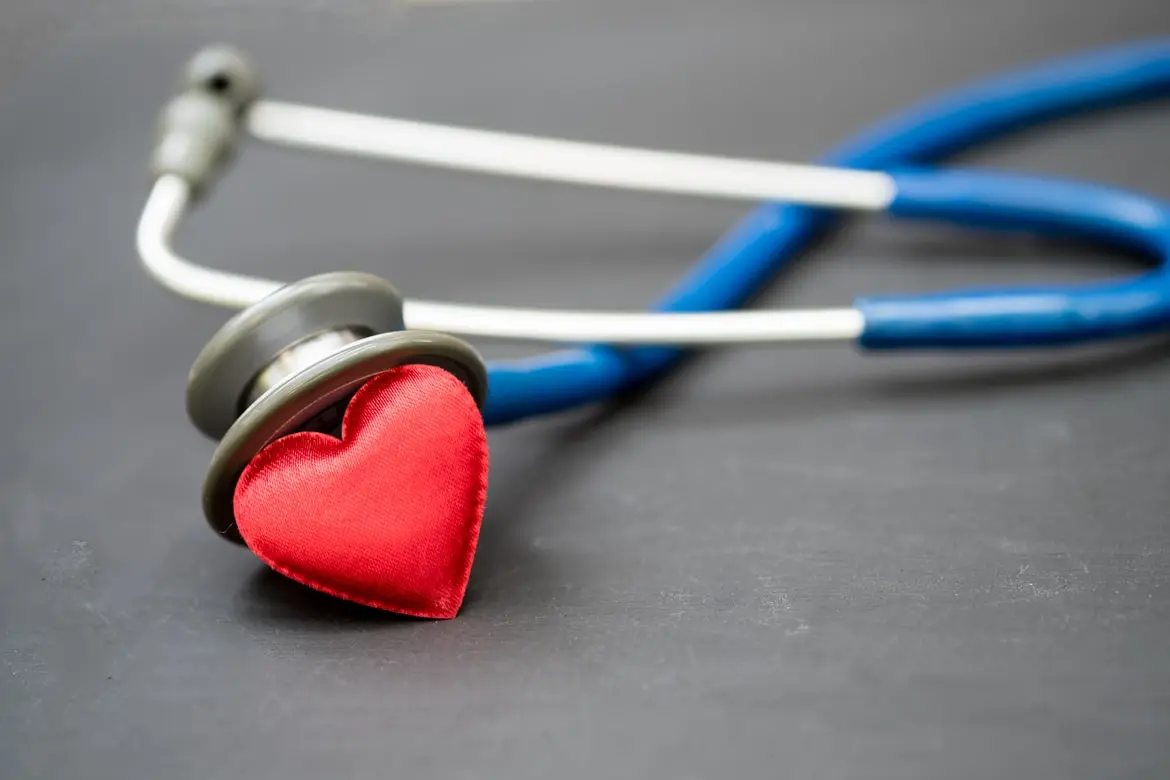What is a Normal Resting Heart Rate?
Let’s talk about resting heart rate (RHR). What is it, exactly? It’s the number of times your heart beats per minute when you’re at rest. Think of it as your heart’s idle speed. Generally, a normal RHR falls somewhere between 60 and 100 beats per minute (bpm). You know what? Several things can influence your RHR. Age plays a role. So does your fitness level. Medications can have an effect, and even stress can change things up a bit.
Now, you might be thinking, “Lower is always better, right?” Well, not necessarily. While a lower RHR can be a sign of good cardiovascular health, particularly in well-trained athletes, it’s not the only thing to consider. For some folks, a heart rate that’s too low can actually be a problem, more on that later, but let’s talk about what influences heart rate.
The amazing thing is that, how low should your heart rate go really varies from person to person. Factors like age definitely come into play – a child’s heart rate will naturally be faster than an adult’s. Fitness level is huge, too. A marathon runner might have an RHR in the 40s, while someone who’s less active might be closer to 80. Certain medications can either speed up or slow down your heart. And let’s not forget about stress! When you’re stressed or anxious, your heart rate tends to increase.
How Low *Can* Resting Heart Rate Go Safely?
So, how low should your heart rate go? It’s a question with no simple answer. What’s considered a “safe” resting heart rate (RHR) really depends on the individual. While a lower RHR is often associated with good cardiovascular health, excessively low heart rate, or bradycardia, can pose problems. Bradycardia is generally defined as a heart rate below 60 beats per minute (bpm). Now, before you start panicking if your heart rate dips below that occasionally, let’s get into some specifics.
Bradycardia itself isn’t always a cause for alarm, especially in well-trained athletes. However, it’s crucial to recognize potential symptoms. If your heart rate is consistently low and you experience dizziness, persistent fatigue, shortness of breath, or even fainting spells, it’s time to consult a healthcare professional. These symptoms suggest that your heart might not be pumping enough oxygen-rich blood to meet your body’s needs. You know what? Ignoring these warning signs can have serious consequences.
It’s important to emphasize that there isn’t a universally “safe” lower limit for RHR. How low should your heart rate go? The answer is that it varies. Factors like age, overall health, activity level, and even genetics play a role. Certain medications can also influence your heart rate. What’s healthy for one person might not be for another. The key takeaway is to pay attention to your body, be aware of any unusual symptoms, and discuss any concerns with your doctor. They can assess your individual situation and determine if your resting heart rate is appropriate for you. After all, when it comes to your heart, it’s always best to err on the side of caution.
Athletic Heart Rate: How to Achieve a Low Resting Heart Rate Through Exercise
Regular aerobic exercise is a fantastic way to lower how low should your heart rate go, especially for athletes and those striving for peak fitness. But how does it actually work? Well, consistent cardio workouts, such as running, cycling, or swimming, trigger a series of beneficial physiological changes within your body. Think of it as fine-tuning your engine for optimal performance.
One key adaptation is an increased stroke volume. That simply means your heart pumps more blood with each beat. Because your heart becomes more efficient, it doesn’t need to beat as often to deliver the same amount of oxygen and nutrients to your muscles. This improved cardiovascular efficiency is why endurance athletes often have remarkably low resting heart rates. You might be wondering how low should your heart rate go if you are trying to be an athlete? For example, a trained marathon runner might have an RHR in the 40s or even lower, and that is perfectly normal and healthy for them. It’s a sign of a well-conditioned heart.
Speaking of specific exercises, let’s look at a few popular choices. Running, whether it’s a gentle jog or high-intensity sprints, is a classic way to boost cardiovascular health and reduce your resting heart rate. Cycling, both indoors and outdoors, provides a great low-impact workout that strengthens your heart and lungs. Swimming is another excellent option. It’s easy on the joints and works your entire body while improving your cardiovascular fitness. How low should your heart rate go with each of these exercises depends on their intensity. So, if you’re aiming for a lower resting heart rate through exercise, consistency is key. Find activities you enjoy and can stick with long-term, and you’ll be well on your way to a healthier, more efficient heart.
Potential Risks of an Excessively Low Heart Rate: Understanding Bradycardia
So, we’ve talked about how a lower resting heart rate (RHR) can be a badge of honor, especially for athletes. But what happens when things go too far? What if your heart rate dips way down, not because you’re super fit, but for other reasons? That’s where bradycardia comes in. How low should your heart rate go? Well, if it’s too low, it may signal a problem.
Bradycardia is generally defined as a resting heart rate below 60 beats per minute. Now, don’t panic if you see that number pop up once in a while. But if it’s consistent, and especially if you’re experiencing symptoms, it’s time to pay attention. What kind of symptoms are we talking about? Dizziness is a big one, as is feeling unusually tired or fatigued. Some people might experience shortness of breath or even fainting spells. These are all red flags that shouldn’t be ignored. How low should your heart rate go before you get worried? If you are having any of these symptoms, it is time to seek medical advice.
You know what? Sometimes, a low heart rate isn’t due to exercise at all. Underlying medical conditions can be the culprit. Things like sick sinus syndrome (a problem with the heart’s natural pacemaker), heart block (an interruption in the electrical signals that control your heartbeat), and even hypothyroidism (an underactive thyroid) can all lead to bradycardia. The main thing to remember is that bradycardia should always be checked out by a doctor, especially if it is not a result of exercise. It’s all about figuring out what’s normal *for you* and how low should your heart rate go, and addressing any potential health concerns early on. Don’t delay seeking medical attention if you suspect something isn’t right. Your heart will thank you for it.
So, You Wanna Know Your Heart Rate? Here’s How to Get It Right
To accurately monitor how low should your heart rate go, you’ll need to understand the best ways to measure it. There are a couple of common methods, each with its own set of pros and cons. You can go the manual route, or use technology to track it. Knowing how to measure your heart rate the right way matters a lot.
First, there’s the classic manual pulse check. You can find your pulse on your wrist (radial artery) or neck (carotid artery). Use your index and middle fingers—never your thumb, as it has its own pulse. Count the number of beats you feel in 15 seconds, and then multiply that number by four to get your beats per minute (bpm). For a really accurate resting heart rate, it’s best to do this first thing in the morning, after you’ve woken up but before you’ve had your coffee or started moving around too much. Laying down is better than sitting. Try to remain as still and relaxed as possible while taking your pulse to get the truest resting rate. Keep in mind that things like anxiety or even just having to rush to get it done can impact the reading.
Then, you’ve got heart rate monitors. These have gotten pretty sophisticated over the years. Chest straps are typically considered the most accurate, as they directly measure the electrical activity of your heart. Wrist-worn devices, like Fitbits or Apple Watches, use optical sensors to detect blood flow. While they’re super convenient, they can be a bit less precise, especially during exercise. It really depends on the model and how well it fits. No matter which method you choose, consistency is key. Try to measure your resting heart rate at the same time each day and under similar conditions. This will give you a better understanding of what’s normal for you and make it easier to spot any potential issues early on. If you are asking “how low should your heart rate go” make sure to compare apples to apples.
What Else Can Mess With Your Heart Rate?
So, you’re tracking your resting heart rate (RHR) and trying to figure out how low should your heart rate go, but it’s jumping around? Fitness isn’t the only player here. Lots of things can cause your heart rate to fluctuate, some are no big deal, and others might warrant a chat with your doctor. Let’s break it down.
Stress and anxiety are big culprits. When you’re stressed, your body releases hormones like adrenaline, which can temporarily send your heart rate soaring. Think about it – that racing heart feeling before a big presentation? That’s stress at work. Dehydration can also raise your heart rate because your heart has to work harder to pump thicker blood. Even something as simple as your posture can have an effect; standing up usually increases heart rate slightly compared to lying down. Caffeine, a stimulant found in coffee, tea, and energy drinks, is well-known for boosting heart rate. The effect varies from person to person, but if you’re sensitive to caffeine, even a small amount can make a noticeable difference. Certain medications can also influence heart rate. Beta-blockers, for example, are often prescribed to lower heart rate and blood pressure, while other medications might have the opposite effect. Did you know that even the temperature of the room can play a role? A warmer environment can sometimes lead to a slightly elevated heart rate.
Now, let’s talk specifics. How low should your heart rate go? Well, even your body position matters! Standing versus sitting or lying down will cause variations. All these factors cause temporary changes, so don’t panic if you see a spike or dip. But, if you notice consistent, unexplained changes, especially if they’re accompanied by symptoms like dizziness or shortness of breath, it’s a good idea to check with your healthcare provider. They can help you figure out if there’s an underlying cause and what, if anything, needs to be done. Trying to understand how low should your heart rate go involves looking at the whole picture, not just a single number.
When Should You Worry About Your Heart Rate?
So, when *should* you be concerned about your resting heart rate? It’s not always a straightforward answer, as individual circumstances play a big role. However, there are definitely situations where a doctor’s visit is warranted. For instance, if you notice an unexplained low resting heart rate, especially if it’s accompanied by other symptoms, it’s a good idea to get it checked out. But, how low should your heart rate go before seeing a doctor? Let’s get into it.
Think about it: feeling dizzy, lightheaded, or even fainting could be signs of a problem. Shortness of breath, chest pain, or heart palpitations (that fluttering or racing feeling in your chest) are also red flags. Don’t just brush these things off! It’s better to be safe than sorry. If your heart rate has suddenly dropped to 50 bpm, that warrants investigation. The key is understanding what is “normal” for you. If you have always had a rate of 75 bpm and it drops all of a sudden, that change should be discussed with your physician.
Also, it’s really important to seek medical advice *before* making any major changes to your exercise routine, particularly if you’re experiencing any of those concerning symptoms we just talked about. Pushing yourself too hard when something’s not right could be risky. Remember, this isn’t about fear-mongering; it’s about being informed and proactive about your health. How low should your heart rate go? If you have concerns, consult a doctor. That’s the best way to ensure your heart is happy and healthy. It’s also very important to mention all medications or supplements that you are taking because many of them can affect your heart rate.
Heart Rate Harmony: Finding *Your* Rhythm
So, how low should your heart rate go? There isn’t a one-size-fits-all answer, is there? Maintaining a healthy heart rate isn’t about chasing a specific number; it’s about finding *your* optimal zone and making lifestyle choices that support it. Think of it as fine-tuning an engine for peak performance and longevity. Let’s recap the key takeaways for keeping your ticker in tip-top shape.
First, movement matters. Regular aerobic exercise, like running, cycling, or swimming – you know, the stuff that gets your heart pumping – can help lower your resting heart rate over time. This is especially true for athletes, but it’s beneficial for everyone. A healthy diet, rich in fruits, vegetables, and whole grains, fuels your heart and helps maintain a healthy weight, which also affects heart rate. Stress, on the other hand, can send your heart rate soaring. Find healthy ways to manage stress, whether it’s through meditation, yoga, spending time in nature, or pursuing hobbies that bring you joy. Remember those heart rate monitors we talked about, Fitbits and Apple Watches? They’re great tools, but they’re not a substitute for listening to your body.
And perhaps most importantly, listen to your body and talk to your doctor. If you experience any concerning symptoms like dizziness, fainting, shortness of breath, or chest pain, seek medical advice promptly. Don’t try to self-diagnose or make significant changes to your exercise routine without consulting a healthcare professional. They can assess your individual health status and provide personalized recommendations. Ultimately, maintaining a healthy heart rate is a lifelong journey, and how low should your heart rate go is between you and your doc. Regular checkups are crucial for monitoring your heart health and identifying any potential problems early on. How low should your heart rate go? Aim for a balanced approach that combines healthy lifestyle choices with regular medical guidance for a heart that beats strong for years to come.




